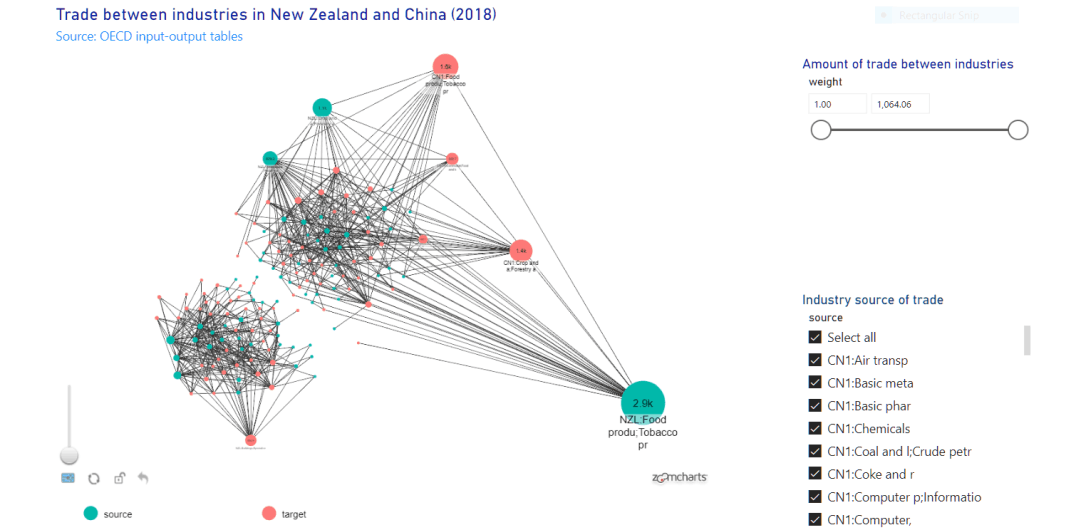
This shows the economic relationships between different industries in New Zealand and China. The Power BI visualization allows for dynamic exploration of the graph.
Economic networks
I often work with networks. I thought it would be fun to create a dynamic visualization of the economic relationships between industries in New Zealand and China. The visualization uses OECD data from the international input output tables to show those ties.
You can find a link to the dynamic visualization here.
Here is a PDF copy of the visualization. The source Power BI file is here.

